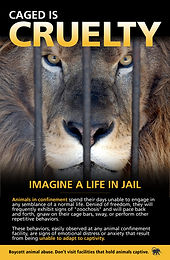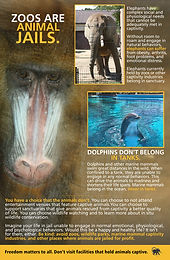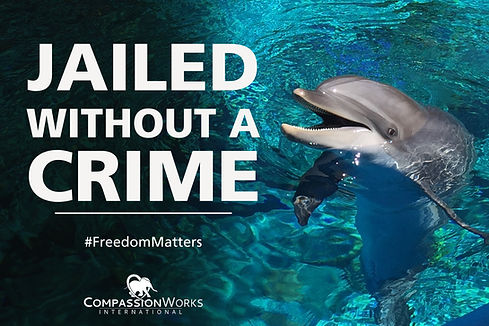
SeaWorld and other marine mammal jails put profit over life.
Facts:
Captivity robs intelligent, sentient animals of everything that is natural to them, like living in family pods and the ability to swim up to 100 miles a day. These unfortunate beings live in the equivalent of a watery jail cell, unleashed only to perform the menial tricks on which the bottom line of SeaWorld, Dolphinaris, and other captivity industries depend.
In captivity, orcas live approximately half their average life span. Their annual rate of death increases 2.5 times inside SeaWorld’s glass cages. From septicemia to fungal infections to pneumonia to cerebral hemorrhage to heart failure, SeaWorld’s orcas have demonstrated a clear failure to thrive in the “entertainment industry”.


Dolphinariums and other marine parks care solely about their bottom line.
Dolphins in captivity frequently experience overexposure to the sun due to lack of tank depths, which can result in sunburn and blistering. Tanks are also often heavily chlorinated, burning the eyes of dolphins and causing permanent damage to eyesight.
In some facilities, the water is improperly treated and maintained, with litter from park customers thrown into tanks, or bacterial growths which lead to lesions and open sores.
Dolphins who participate in "swim with" interactions are regularly observed with wounds and abrasions from being handled by customers, their beaks raw from pushing guests through the water or being grasped for kisses and photo ops. Other wounds are observed as the result of aggressive outbursts from tank companions, as bullying has been regularly documented. Dolphin and whales in captivity are often documented with compromised teeth, often the result of frustrated chewing on their tank walls.
In their orca counterparts, confinement in small tanks leads to the well-documented “fin flop” in male orcas, a condition noted in 100% of captive male orcas and 0% in wild male orcas.
Don't believe their lies. Captivity isn't conservation, and it does not take the health and well-being of dolphins, orcas, and other marine mammals into consideration.
Take Action:
1. Never attend SeaWorld or any entertainment venue that includes marine mammal captivity.
2. If you live in the area of a SeaWorld park, start or attend a protest. You can find protest listings by searching on Facebook. They frequently take place in San Diego and in Orlando. Below, you can download free posters and leaflets, so you do not need to design your own materials to attend a protest.
3. Let others know about issues surrounding marine mammal captivity. One way to do this is by sharing information on your social media.
4. Sign petitions. Click here to sign petitions and take other actions related to CWI campaigns.
5. Watch the movies Blackfish, The Cove, and Inside the Tanks, and encourage others to do the same. Consider holding a viewing party at your home!
6. Write to marine mammal parks and let them know your thoughts on captivity. You can email SeaWorld at: SWC-CommunityRelations@SeaWorld.com and/or tweet them at @SeaWorld and Miami Seaquarium at pr@msq.cc.















